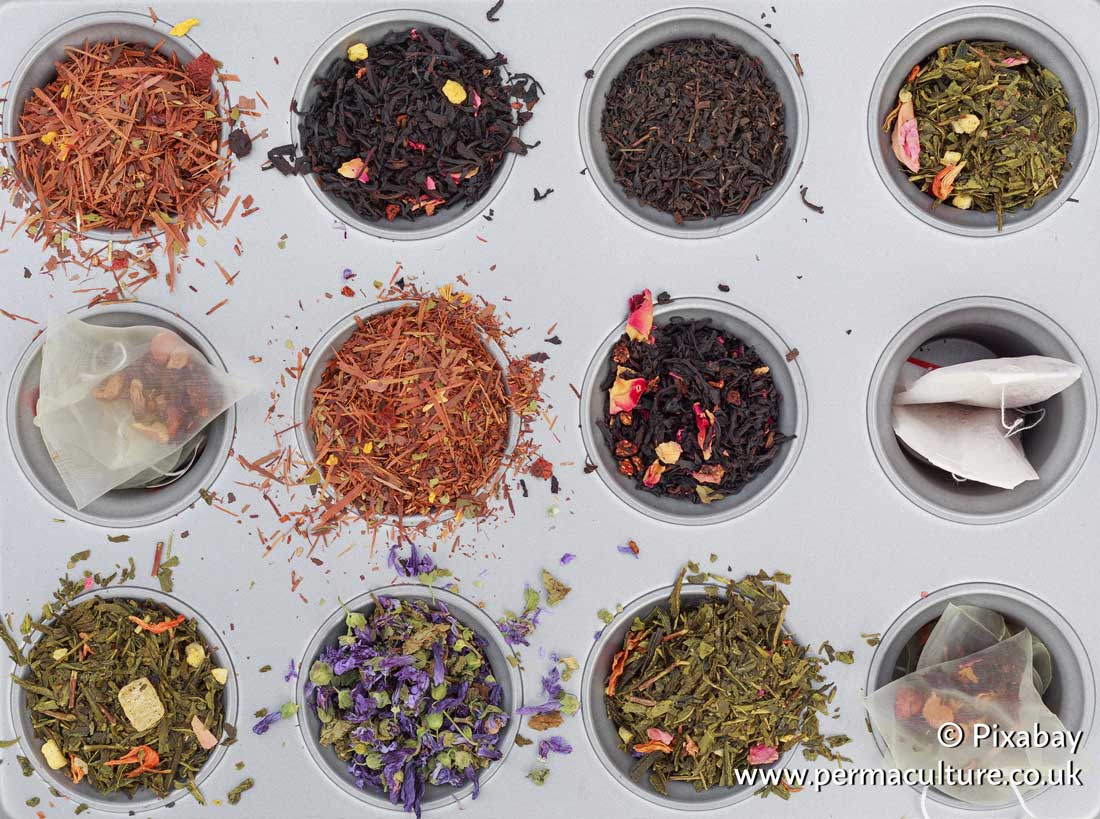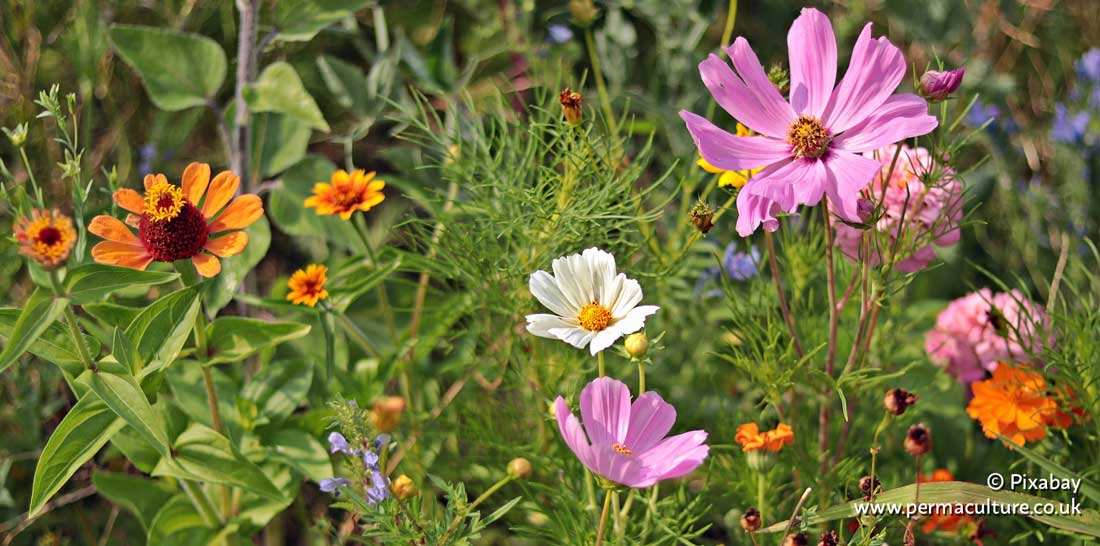Mid-spring is the time of year when vegetable gardeners grumble about the ‘hungry gap’. A problem for annual vegetable growers, this is the spring period when your overwintering crops such as cabbages, parsnips and leeks are all finishing, and the early summer crops are not yet harvestable.
But it is also the time of year when the forest gardener feels most contented. Growing perennial crops, which is what a forest garden consists of, makes it possible to avoid a gap in your harvesting season. The reason for the gap is the time it takes for the annual plants to germinate and grow. Perennial plants, whether herbaceous or woody, have a mature developed root system from which they can grow as soon as the environmental conditions are right in the late winter and early spring time. Roots accumulate carbohydrates while photosynthesising in the summer, which are stored through the winter to get them going in the spring, so while your cabbages are still on the starting blocks, your perennial Brassicas are already adorned with lush green, edible leaves.
In Food From Your Forest Garden, Martin Crawford lists more than 120 forest garden plants which crop between February and May, including: fruits, nuts, salad leaves, vegetables, flowers, bulbs, roots, tubers, herbs and spices. This impressive collection of trees, shrubs and herbaceous plants clearly demonstrates not only an uninterrupted, but a diverse harvest, the like of which the annual vegetable garden could never achieve.
It’s not a competition, the forest garden crops and the annual vegetables fulfil different niches within the garden and the kitchen. Having been raised on annual vegetables which have been bred over generations to be bigger, milder and juicier than their original, wild forms, there is a place in all of our hearts for a fresh young courgette or a juicy ripe tomato, and we needn’t give them up. These two very different ways of growing can work very well side by side, so really you can have your carrot cake….and eat it. So what is on the forest garden menu this spring?

Root crops can be stored from the late summer and autumn, and many will stay in the ground over winter, but need to be harvested before the plant begins to grow again in the spring. One of latest root tubers you can harvest is groundnut. This is not the same as peanut of course, which is often called groundnut in the States, but is a delicious, ovoid tuber about the size of a ping-pong ball. Its name comes from its nutty, earthy flavour which lends itself perfectly to roasting or including in soups and casseroles.
Shoots are the first signs of life after winter, which get gardeners and cooks really excited as we watch them emerge from the cool soil, bursting with green promise. The forest garden has many shoots on offer, from familiar standards like asparagus, to the less usual like ostrich fern shoots and yellow asphodel, and some more surprising options such as hop shoots or hostas.
Cardoon stems are a common vegetable in Italy and are often eaten breaded and fried. Similarly, ostrich fern shoots or ‘fiddle heads’ are popular in the States and are delicious lightly battered and accompanied by a tasty dip. Most shoots though are at their best lightly cooked super fresh and rolled in butter as a side vegetable, to make the most of their delicate flavour and succulent texture (lead image).

Salads are about to get more interesting! A combination of purslane, beech and watercress is just the right balance of fresh, sweet and peppery, and there will soon be many more to choose from; mallows, landcress, Turkish rocket or saltbush for example. Leaf greens are very easy to incorporate in to daily cooking; they work very well in quiches and soufflés, and are great added to pasta sauces and curries. It’s time to bring some fresh flavour into the kitchen too, with aromatic mints, lemonbalm, fennel, alexanders and ramsons. Let the senses re-awaken! See lead picture for inspiration.
There are some familiar fruits which we harvest in the autumn and store through the winter, such as apples and pears, but there are some which crop in the spring like strawberries, which make an excellent ground cover crop. Fruit is often dominant in a forest garden because most edible tree and shrubs crops are fruits and berries. Therefore preserves feature largely in the forest gardener’s kitchen. It is worth learning the arts of jam, chutney making and bottling for which tree fruits like apples, pears and plums are very well suited. If you enjoy a tipple you could try some winemaking – birch sap is collected in the spring as the sap rises and makes a delicious sweet wine. Later in the year there are many fruits and flowers which make wonderful wines and liqueurs to ease you through long winter evenings.
This time of year need not be sparse and dreary in the garden or the kitchen, and there’s no need to go hungry, there’s plenty to fill the gap!
Caroline Aitken teaches permaculture at Whitefield Permaculture. She is often asked about forest garden foods and how to prepare them.











